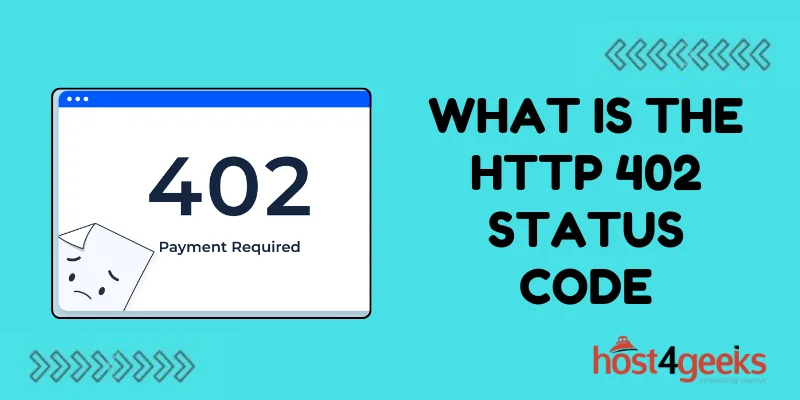In the expansive realm of the internet, communication between clients and servers occurs through the Hypertext Transfer Protocol (HTTP), a fundamental protocol that governs this interaction.
This protocol is accompanied by a wide array of status codes, each representing a specific aspect of the exchange. Among these is the HTTP 402 status code, often overlooked but carrying significant implications.
This article on what is the HTTP 402 Status Code? delves into the essence, significance, and practical implications of the HTTP 402 status code.
Introduction to HTTP Status Codes:
HTTP status codes are three-digit numbers returned by a server in response to a client’s request. They offer a concise means of communication, indicating the outcome of the request and guiding both clients and servers on subsequent actions.
These status codes are broadly categorized into five classes, each serving a distinct purpose:
1. Informational (1xx):
Provisional responses indicating that the client’s request is acknowledged and in progress.
2. Success (2xx):
Indicates that the client’s request was successfully received, understood, and accepted.
3. Redirection (3xx):
Indicates further action needs to be taken by the client to fulfill the request.
4. Client Error (4xx):
Indicates that the client has sent a faulty request.
5. Server Error (5xx):
Indicates that the server failed to fulfill a valid request due to an error on its end.
Within the client error category lies the HTTP 402 status code, signaling a scenario where payment is required to access the requested resource.
Significance of HTTP 402 Status Code:
The HTTP 402 status code plays a crucial role in scenarios involving paid access or subscription-based services. It serves as a mechanism for enforcing payment requirements before granting access to specific resources.
This status code is particularly relevant in e-commerce platforms, subscription-based content services, and paywalls where access to premium content is contingent upon payment.

Step-by-Step Process of HTTP 402 Status Code:
The process involving the HTTP 402 status code unfolds in the following steps:
1. Client Request:
The client initiates a request to access a resource on the server, typically through a web browser or an application.
2. Server Evaluation:
Upon receiving the request, the server assesses whether the requested resource falls under a paid category or requires a subscription for access.
3. Payment Check:
If the requested resource demands payment or subscription, the server verifies whether the client has fulfilled the necessary payment obligations.
4. HTTP 402 Response:
If the client has not made the required payment or lacks a valid subscription, the server responds with an HTTP 402 status code, indicating that payment is required to access the resource.
5. Client Handling:
Upon receiving the HTTP 402 response, the client application or web browser interprets the status code. It typically prompts the user to proceed with the payment process or provides instructions on how to subscribe to the service.
6. Payment Fulfillment:
The client follows the provided instructions to complete the payment process or subscribe to the service, ensuring compliance with the server’s requirements.
7. Access Granted:
Once the payment is successfully processed or the subscription is confirmed, the server grants access to the requested resource, allowing the client to proceed with accessing the content or service.
Pros and Cons of HTTP 402 Status Code:
Pros:
1. Monetization:
For businesses offering premium content or services, the HTTP 402 status code facilitates monetization by enforcing payment requirements before granting access.
2. User Awareness:
The status code provides clear feedback to users, indicating that payment is necessary to access the desired resource, thus reducing confusion.
3. Controlled Access:
It allows businesses to control access to premium content, ensuring that only paying customers can avail themselves of the specified services or resources.
Cons:
1. User Frustration:
Users may find it inconvenient to encounter an HTTP 402 status code, especially if they were unaware of the payment requirement beforehand, leading to potential frustration.
2. Potential Abandonment:
Some users might abandon the transaction or leave the website upon encountering the HTTP 402 status code, particularly if the payment process is cumbersome or if they perceive the content as not worth the cost.
3. Complex Implementation:
Implementing support for the HTTP 402 status code requires additional development effort to integrate payment processing mechanisms and subscription management systems, adding complexity to web applications.
Conclusion:
In the intricate web ecosystem, HTTP status codes serve as indispensable tools for conveying information between clients and servers. The HTTP 402 status code, although less commonly encountered, holds significant importance in scenarios involving paid access or subscription-based services.
By following the step-by-step guide provided in this article on What Is the HTTP 402 Status Code?, it enables businesses to monetize their offerings while providing users with clear feedback on the access requirements.
However, its implementation requires careful consideration to balance monetization objectives with user experience, ensuring that the payment process is seamless and user-friendly.
Ultimately, the HTTP 402 status code underscores the nuanced interplay between commerce and communication in the digital landscape.
